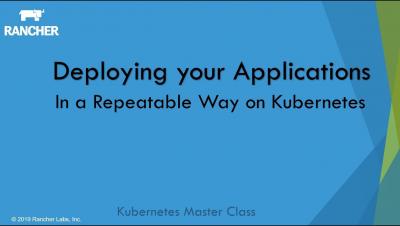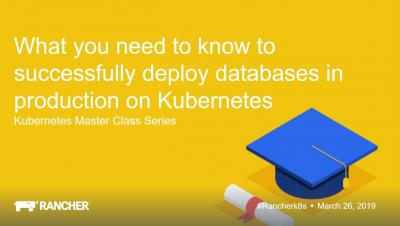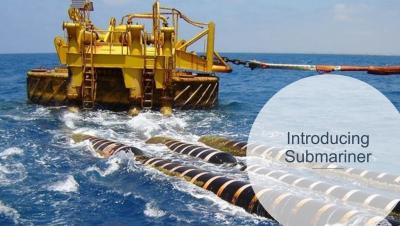Operations | Monitoring | ITSM | DevOps | Cloud
Rancher
The Business Case for Container Adoption
Developers often believe that demonstrating the need for an IT-based solution should be very easy. They should be able to point to the business problem that needs a solution, briefly explain what technology should be selected, and the funds, staff, and computer resources will be provided by the organization. Unfortunately, this is seldom the actual process that is followed.
Deploying your Applications in a Repeatable Way on Kubernetes
An Introduction to Big Data Concepts
Gigantic amounts of data are being generated at high speeds by a variety of sources such as mobile devices, social media, machine logs, and multiple sensors surrounding us. All around the world, we produce vast amount of data and the volume of generated data is growing exponentially at a unprecedented rate. The pace of data generation is even being accelerated by the growth of new technologies and paradigms such as Internet of Things (IoT).
Rancher 2.2 Hits the GA Milestone
We released version 2.2.0 of Rancher today, and we’re beyond excited. The latest release is the culmination of almost a year’s work and brings new features to the product that will make your Kubernetes installations more stable and easier to manage.
What you need to know to successfully run databases in production on Kubernetes
Comparing Kubernetes CNI Providers: Flannel, Calico, Canal, and Weave
Network architecture is one of the more complicated aspects of many Kubernetes installations. The Kubernetes networking model itself demands certain network features but allows for some flexibility regarding the implementation. As a result, various projects have been released to address specific environments and requirements.
Online Meetup: Introducing Submariner -- Multi-Cluster Networking for Kubernetes
k3s -- The Lightweight Kubernetes Distribution Built for the Edge
Announcing Submariner, Multi-Cluster Network Connectivity for Kubernetes
Today we are proud to announce Submariner, a new open-source project enabling network connectivity between Kubernetes clusters. We launched the project to provide network connectivity for microservices deployed in multiple Kubernetes clusters that need to communicate with each other.











